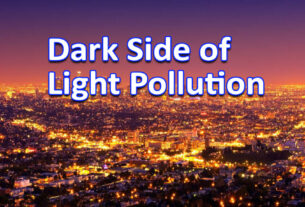Carbon emissions refer to the release of carbon dioxide (CO2) and other greenhouse gases into the Earth’s atmosphere. These emissions are primarily generated by human activities, such as burning fossil fuels (coal, oil, and natural gas) for energy, deforestation, industrial processes, and transportation. Carbon emissions play a significant role in driving climate change and global warming due to the greenhouse effect.
Here are some fundamental points about carbon emissions:
- Greenhouse Effect: Greenhouse gases, including carbon dioxide, trap heat in the Earth’s atmosphere and contribute to the natural greenhouse effect. However, increased levels of these gases from human activities have intensified the greenhouse effect, leading to global warming and climate change.
- Fossil Fuel Combustion: The combustion of fossil fuels, such as coal, oil, and natural gas, for energy production is the largest source of carbon emissions. This occurs in power plants, factories, vehicles, and residential heating systems.
- Deforestation: Trees and plants help absorb carbon dioxide from the atmosphere through photosynthesis. When forests are cleared or burned, this carbon is released back into the atmosphere, contributing to carbon emissions.
- Industrial Processes: Certain industrial activities, like cement production and chemical manufacturing, release carbon dioxide and other greenhouse gases as byproducts.
- Transportation: Cars, trucks, airplanes, ships, and other forms of transportation rely heavily on fossil fuels, leading to substantial carbon emissions. The transportation sector is a significant contributor to global carbon emissions.
- Agriculture: Agricultural practices, such as livestock production and rice cultivation, can produce methane (another potent greenhouse gas) and nitrous oxide emissions, both of which contribute to global warming.
- Land Use Changes: Besides deforestation, changes in land use, such as urbanization and changes in agricultural practices, can affect carbon emissions.
- Carbon Footprint: The term “carbon footprint” is used to describe the total amount of carbon emissions associated with an individual, organization, product, or activity. It provides a way to measure and understand the impact of various actions on the environment.
- Climate Change Impact: Excessive carbon emissions have led to a warming climate, resulting in rising global temperatures, sea level rise, more frequent and intense weather events, shifts in ecosystems, and other adverse impacts.
- Mitigation and Adaptation: To address the challenges posed by carbon emissions, efforts are being made to mitigate their release through policies, technologies, and lifestyle changes. This includes transitioning to renewable energy sources, improving energy efficiency, reforestation, and adopting sustainable agricultural practices. Additionally, adapting to the changes already occurring due to carbon emissions is also a crucial aspect of climate action.
Reducing carbon emissions is a vital step in combating climate change and its associated consequences. It requires global cooperation and sustained efforts to transition to a low-carbon economy and reduce our overall environmental impact.
bhalakatha
prayas
mind plugin
#bhalakatha #prayas #MindPlugin





